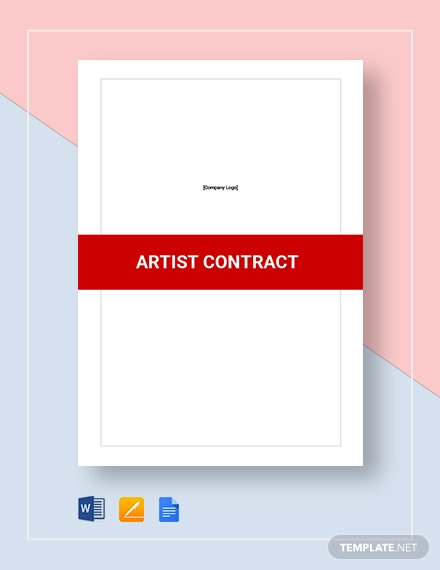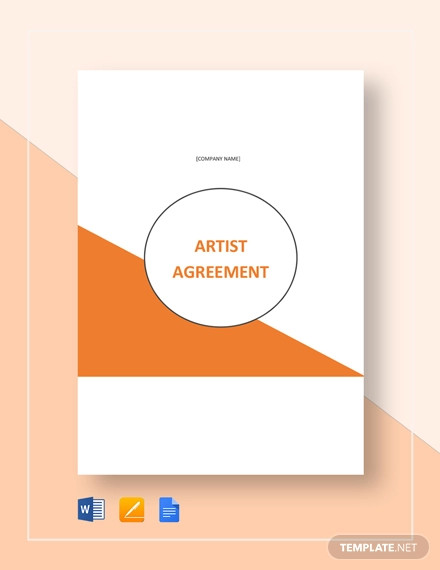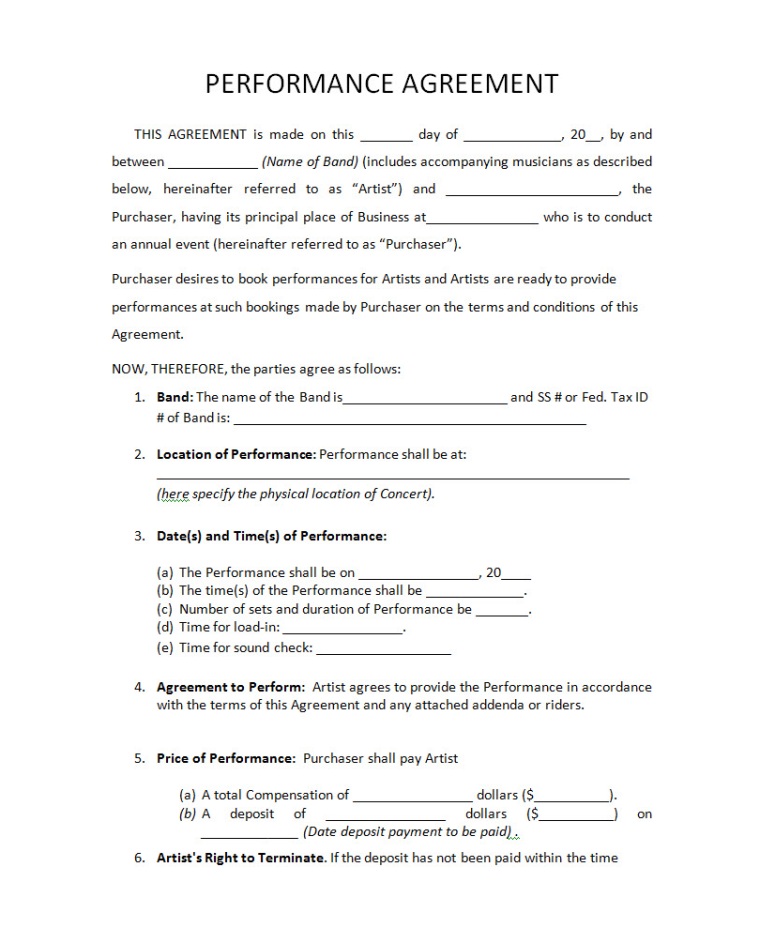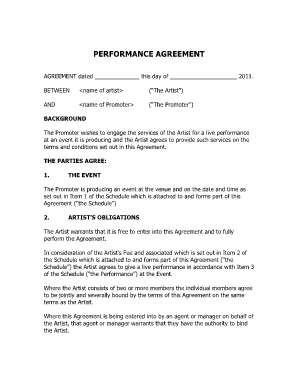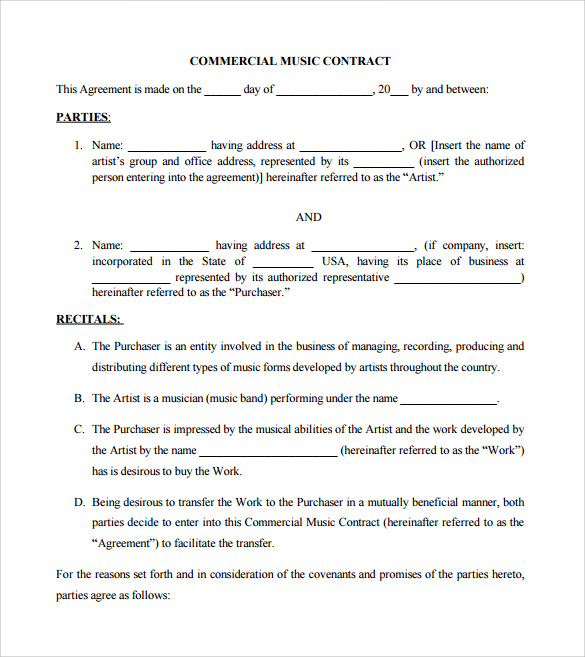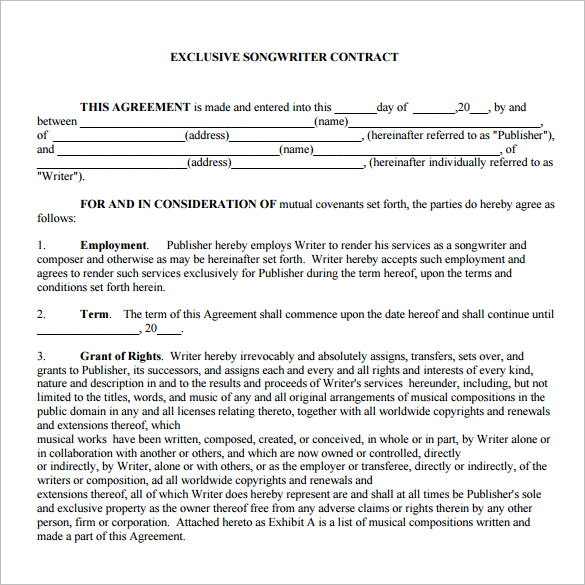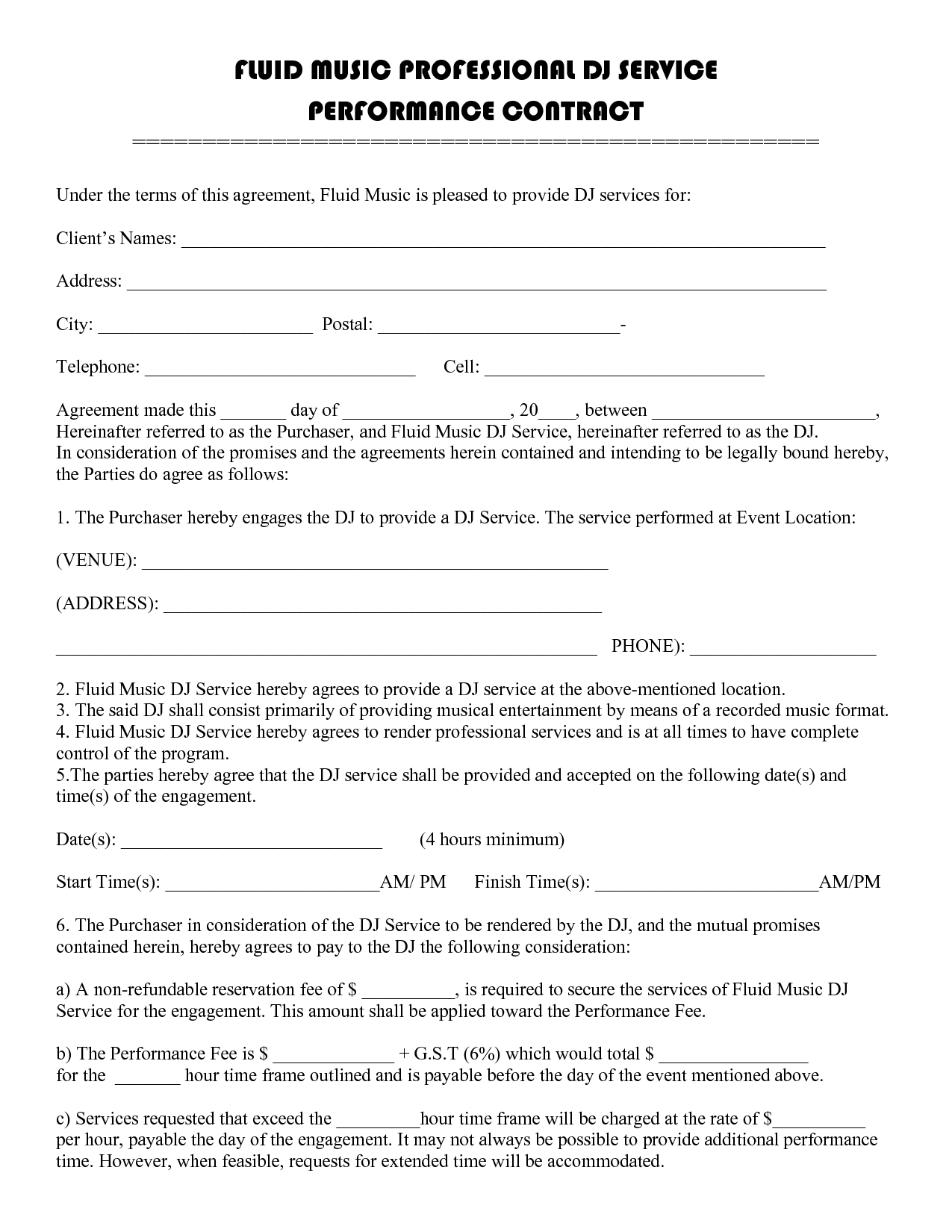7+ Artist Performance Contract Examples to Download
The agreement or contract is the legal document between an artist or owner of an artwork and a borrowing institution, or between an exhibition organizer and the host venue. They are written to specify details about work to be undertaken and the expected outcomes. Formal agreements give both parties a clear point of reference as to their individual duties and responsibilities.
The contract should confirm the specific details of the content of an exhibition such as:
- the name and the address of the borrowing organization and lender;
- the details of the work to be borrowed or lent;
- insurance and transport arrangements;
- condition reporting procedures to be undertaken;
- time frame;
- dispute resolution;
- force majeure;
- copyright and documentation agreements; and
- payment schedule on the delivery of work.
Artist Contract Template
Artist Agreement Template
Artist Performance Agreement Template
What is a contract, and why do you need one?
You need a contract because human relationships are inevitably messy, memories are often imperfect, and thus unreliable, and communication is often ambiguous. A contract cannot protect you from any of this. In fact, nothing can. But it can bring you some clarity and consensus.
Clarity because everything you agree upon will be put in writing. Everything that was said, and even those that are not said, will be tangible so that all parties can review it before embarking on a joint project. Consensus because each party must agree to what is written before proceeding further. If any problems arise afterward, the contract stands as the objective document to fall back on.
Simply put, a contract is a document that can protect all parties by avoiding misunderstandings and serving as a paper trail if things do go wrong. It will outline the terms and conditions under which you will perform your work, what you will provide to the client, and what they will provide to you in return. Its purpose is also to anticipate problems and clarify the responsibilities of both parties should problems arise.
A contract isn’t necessarily a thick document with lots of legalese. A contract can be a simple outline of the terms and conditions by which you and your client agree to work. Or it can be a complex document of several pages, depending on the intricacy of the project or the number of elements involved.
Its purpose is to set forth the terms of work – deadlines, the scope of work, and limitations, contingencies in case of unexpected changes and potential misunderstandings. More than anything, putting these items in writing prevents miscommunication and keeps everyone’s stress level low.
Many creative professionals believe that contracts are only necessary for big jobs with big fees for big clients. They often skip the paperwork on small projects. But it’s actually the little stuff that has the most potential to cause time-consuming, expensive problems.
Contracts are especially important for creative professionals because when you sell your work, you are also selling a right to your property – in this case, your intellectual property, which is intangible. And because it’s intangible, the process may be less clear that if the object in question were tangible, like a car or a house.
However, a contract is only as good as the people signing it. Business relationships are built on trust. In fact, many agreements are made on a handshake and that is enough if both parties are trustworthy. So the rule to live by is this: If you sense that your partner is not negotiating in good faith, walk away. Nothing you put in a contract will be able to protect you.
What about a contract’s ability to anticipate what might happen? In real life you can’t predict everything that could possibly happen, so don’t spend too much time thinking about every single “what if.” If you’re dealing with honorable people, you’ll come up with an acceptable solution to an unanticipated problem, even if it’s not in the contract.
With that being said, have your own contract drawn up by an attorney who understands creative services and your interests. You can customize it for each situation. If that’s beyond your means, there are plenty of resources available.
Sample Artist Performance Contract
Artist Performance Agreement Document Sample
Commercial Music Artist Performance Contract
What Should be in Your Contract
To help you get started, take a look at a few basic components to include in your contract so you can better protect your art.
Client’s Info. Begin your contract with each parties’ name, business, address, email, and phone number to make it clear who is involved and how you can get in touch.
Project Info and Terms. Next, explain exactly what the project is and what each person is responsible for. Whether it’s a contract for a new gallery representation, or a commissioned piece, or a product you are tasked to create, this is where it pays to be extremely clear and detailed so that everyone understands what is expected to come out of the agreement, and to make sure that you are not forced to do more than what was agreed upon.
Think about every aspect of the project from start to finish. What is involved? Who will be in charge of getting it done? When and how? Dig deeper to determine the exact details.
Project Timeline. Whether you create an entire section dedicated to the project’s timeline or include it in the terms above, it’s important to spell out the time expectations for the project. Both parties will have duties that need to be completed by a certain time or date in order for the project to be finished successfully. This section of the contract should also state the ramifications if one party fails to deliver.
Cost and Payment Terms. Include a section where you name the price and costs of the project. Be sure to pinpoint who is responsible for paying what, including any hidden fees or taxes, and set specific due dates and processes for the payment.
Will you require a deposit up front, payments throughout, and a final payment? Will you accept credit, cash, or check? What percentages will wholesalers or other agents take? Cover the money-related terms extensively early on, so you can focus on the art process.
Itemization. It may be necessary for every contract, but if you are consigning your artwork to a gallery or retailer, you will want to go the extra mile to protect your business by including an itemized list of the products and piece which you will be turning over to them. The list can include images and details like title, dimension, medium, description, price, and so on.
Artist’s Right. This section doesn’t have to be extensive. It can be a simple statement about retaining the copyrights to your artwork.
Cancellation Terms. To finalize the contract, include an agreed upon statement that includes the terms of the contract, followed by the names, signatures, and the date to be signed by both parties.
Exclusive Songwriter Performance Contract
DJ Service Performance Contract Template
Conclusion
When it comes to an effective art contract, the devil is in the details. There can be so many responsibilities to keep track of that it just makes sense to spell out who’s in charge of what and when. In the end, you will avoid any misunderstandings, help the process go more smoothly, and protect your business and intellectual property with a solid contract for reference.



